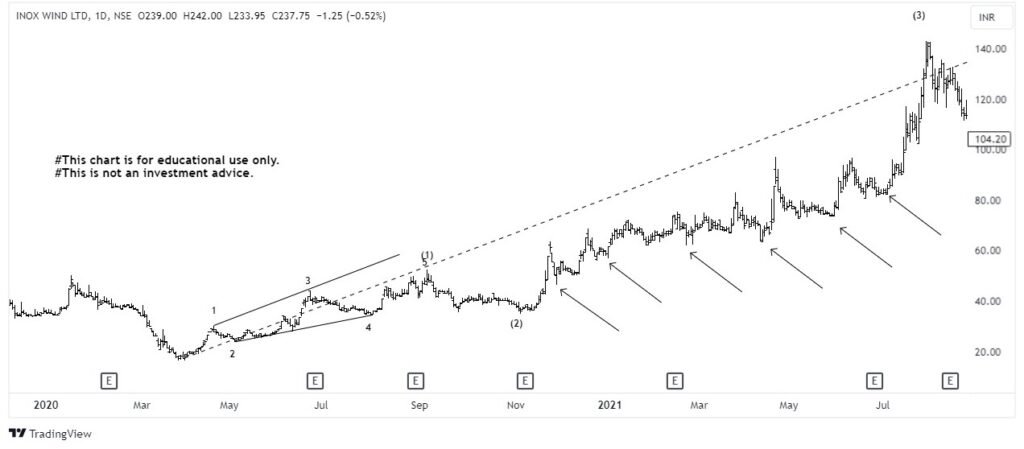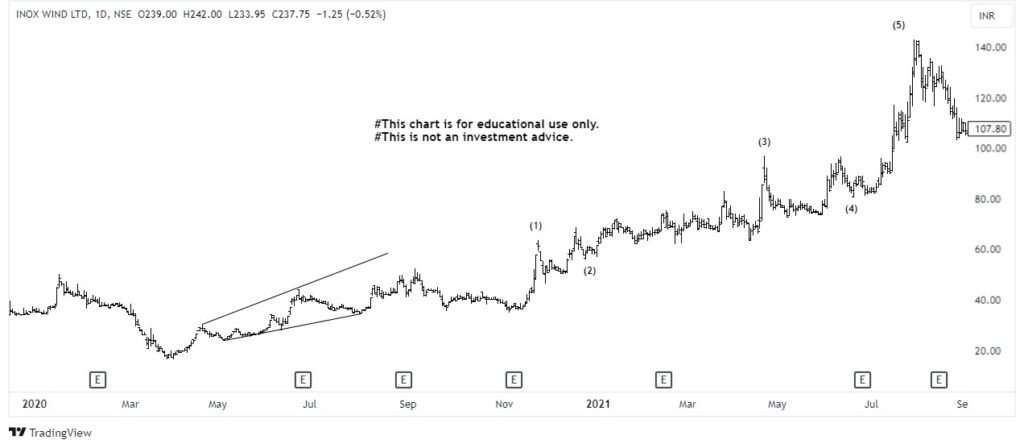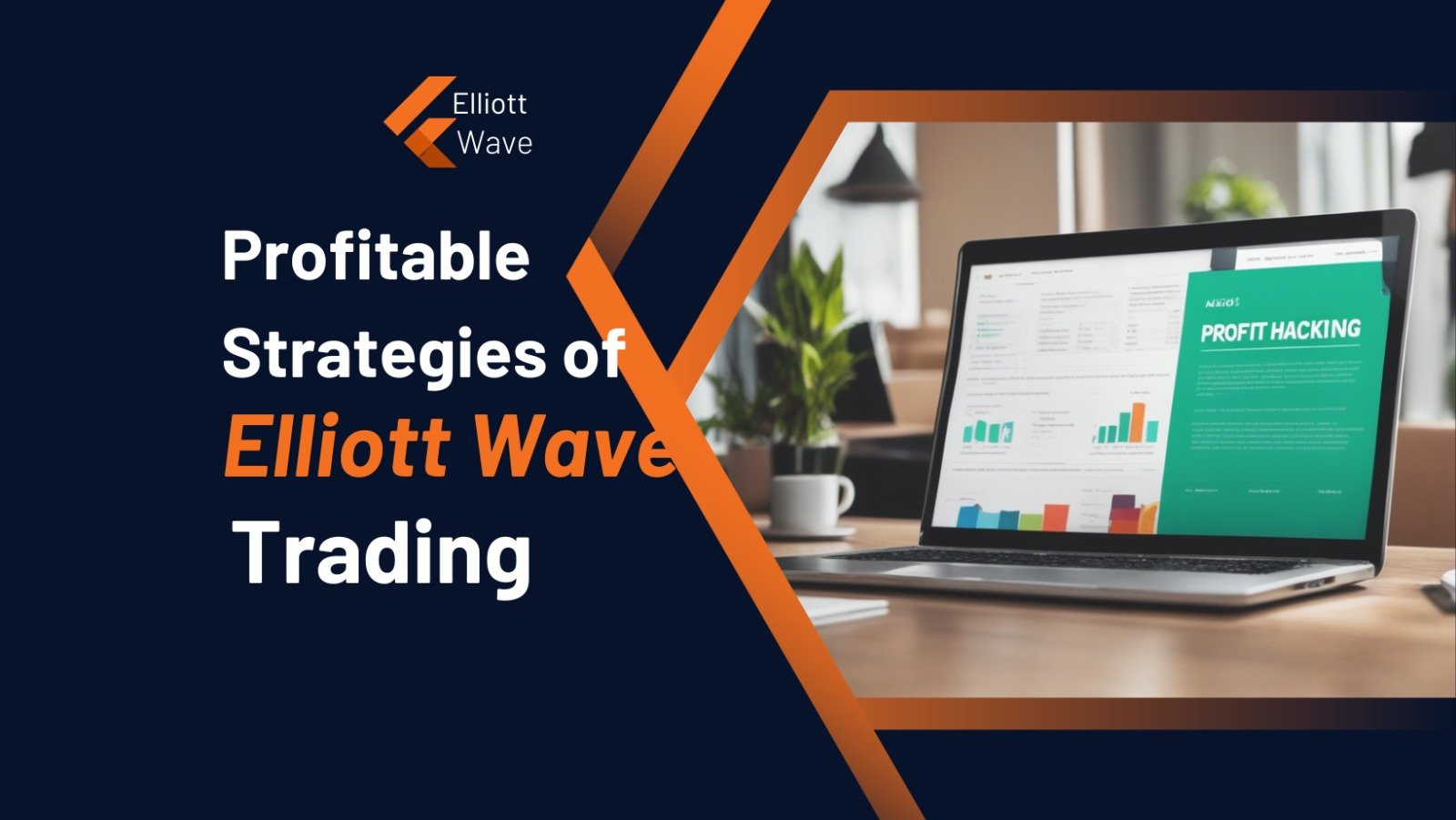Elliott Wave Trading is a method that assists traders in entering, exiting, and following market trends by recognizing recurring patterns. To master this technique, one must understand market movements, identify potential trend reversal points, and implement strategies such as patience, stop-loss trailing, and wave counting.
In Short
Maximize your potential with Elliott Wave Trading and transform your market strategy! Ralph Nelson Elliott’s exciting theory serves as a tool and transforms traders’ ability to enter, exit, and follow trends.
Imagine a trading strategy designed to learn your preferences and use that information to maximize your profits by taking the simplest approach. Gain the knowledge needed to understand market movements and enhance your trading skills with a guide that reveals successful Elliott Wave trading techniques.
Mastering Elliott Wave Strategies for Unparalleled Market Success
Explore the world of Elliott Wave methods and revolutionize your trading experience!
We will explore how this method uncovers unique opportunities, enabling you to enter and exit the market with precise accuracy and in alignment with its movements. Think about how much easier trading would be if you had access to a toolbox that could adapt to your specific trading style while simultaneously providing you with strategic advice.
Stop following the crowd and become an Elliott Wave master to improve your trading and investing.
How Do You Master the Elliott Wave Trading Skills?
Mastering Elliott Wave trading skills requires theoretical knowledge, practical application, and experience, utilizing Ralph Nelson Elliott’s Elliott Wave Theory to identify recurring market patterns.
When the market is in a correction phase, it is crucial to be patient and wait. Following the correction, the motive phase begins, a time when both traders and investors eagerly anticipate potential price activity.
The onset of the motive phase signals a potential price reversal. A significant cross above the recent lower high in a downtrending market can serve as an early indication of a potential price reversal. In contrast, in an uptrending market, you should consider taking the opposite position.
Concentrating on the lower-degree motive wave is essential. Another effective method for confirming the beginning of the motive phase is to examine price action divergence. Any oscillator displayed on the chart can assist in confirming divergence and offer insights into potential future price movements and trends.
Divergence Trading Strategy
A divergence trading strategy entails identifying potential trend reversal points on a chart by observing discrepancies between price movement and a technical oscillator.
Divergence occurs when the price trend deviates from the indicator trend, a common observation during reversal moments. Traders frequently use this divergence as a hint for prospective trend changes, allowing them to make informed market entry or exit decisions.
Advanced Divergence Trading
- Identify instances where the price trend diverges from a technical oscillator, indicating a potential divergence.
- Divergence is a common occurrence at reversal points on a chart, indicating a change in the current trend.
- Bullish divergence occurs when the price forms lower lows while the oscillator forms higher highs, indicating a possible upward reversal in an uptrend.

UNIONBANK / DAILY CHART
- Bearish divergence occurs when the price forms higher highs while the oscillator forms lower lows, indicating a potential downward reversal in a downtrend.
- Divergence serves as a warning signal, so it’s crucial to wait for additional confirmation signs before making trade decisions.
- Divergence, a common feature on oscillators like RSI, MACD, etc., is a crucial tool for predicting trend changes and strategizing trades.
Price-oscillator divergence happens when technical indicators like the RSI, MACD, and Awesome Oscillator do not match up with price changes before a major market movement. This divergence is significant to traders, as it may indicate a potential shift in market sentiment. Traders closely monitor this divergence because it may indicate a potential shift in market sentiment.
Recognizing this divergence prompts traders to exercise caution, reassess their positions, and prepare for potential changes in the upcoming motive phase.
Elliott Wave Theory alone predicts market movement, but RSI divergence improves it. Divergences at key wave junctures help traders pinpoint entry and exit points. Elliott Waves and RSI can unlock high-probability trading opportunities when used properly. Read more…
How to Get a New Trade?
Rule 1: Traditional Entry Strategy
In Elliott Wave trading, a typical approach to initiating a new trade occurs when the price crosses above Wave 1. This position is a common entry point. However, it comes with a drawback: a long stop loss.
We place the stop-loss order at the start of Wave 1. While this kind of entry provides a clear signal, it is vital to note that the trade may have a greater stop-loss distance. Traders should evaluate this trade-off while considering whether to adopt this classic entry strategy in Elliott Wave trading.

UNIONBANK / DAILY CHART
Rule 2: Aggressive Entry Strategy
If Wave 1 is completed at a lower degree, the price typically retraces between 50% and 61%. This retracement provides an attractive entry point at a reasonable price.
You can place the stop-loss at the same level as the starting point of Wave 1. Because of the earlier entry, the risk is considered low, making it a suitable option for traders seeking nominal risk exposure.

UNIONBANK / DAILY CHART
Rule 3: Defensive Entry Strategy
Elliott Wave Trading is a strategy in which a strategic entry point arises when Wave 1 concludes at a lower degree. A brief correction phase, often a 3-wave ABC correction, occurs, and the price rallies in line with the main trend.
Savvy traders wait patiently for the price to cross Wave B, providing confirmation and assurance before committing to the trade. The stop-loss strategy remains consistent (starting point of wave 1), offering stability and risk management.
This approach combines the precision of timing Wave 1 with the confirmation signal from crossing Wave B, ensuring a calculated and strategic market entry.

UNIONBANK / DAILY CHART
Apple’s 2003–2007 Bull Run: Capitalizing on the Uptrend with Elliott Wave Strategy
In 2003, Apple Inc. was trading at less than $1.00 (split-adjusted), and most investors had lost interest in the stock. However, a few insightful analysts identified a notable shift — the stock had recently concluded a complex correction and was beginning a new Wave 1 in an Elliott Wave cycle. As Apple introduced the iPod and aimed to revolutionize digital music, the fundamentals started to align with early signs of an impulsive uptrend. By 2004–2005, the chart displayed a distinct 5-wave pattern — the perfect Elliott Wave setup for a long position.
Those who recognized the pattern and remained invested throughout the trend experienced significant gains. By the end of 2007, Apple’s stock had increased more than tenfold.
This rally was not merely a result of sound business practices; it exemplified a textbook Elliott Wave bullish cycle:
- Wave 1 breakout is characterized by strong volume.
- Wave 2 pullback provides an ideal entry opportunity.
- Wave 3 represents the strongest and most profitable phase.
This real-world example illustrates how leveraging Elliott Wave principles to ride an uptrend can result in substantial long-term profits—provided you understand how to interpret the waves.
Profit Hacking Guide
Once you accurately identify Wave 1, Wave 3 often triggers a quick price rally, increasing trading volume and confirming the possibility of substantial profits. After entering a trade, it is vital to keep a cool approach and avoid falling victim to rumors. Furthermore, implementing a stop-loss trailing method might help minimize loss and safeguard profits.
Rule 1: Patience for 161 Percent
The principle suggests that understanding the expected 161% return and at least a 161% increase in Wave 1 can help book profits at the 161% level without confusion.

INOXWIND / DAILY CHART
Rule 2: Stop-loss Trail
When trading in an uptrend, it’s essential to adjust the stop-loss to consecutively higher low points to secure gains. In a downtrend, it’s better to trail it at lower high points. This methodical approach helps contain potential losses and automatically book profits.
This approach offers a nuanced and effective strategy for risk management and profit optimization, adjusting the stop-loss accordingly to the trend’s highs and lows.

INOXWIND / DAILY CHART
Rule 3: Wave Counting
In the world of Elliott Wave Trading, a meticulous approach to position-taking entails segmenting the price trajectory into five distinct subdivisions when conducting sub-wave analysis. Prices unfold in five waves, according to the norms of motive waves.
Notably, Wave 3 has strong momentum, moving the market forward. Following this, Wave 4 emerges as a complex corrective, further deepening the overall pattern. Even after Wave 4, there is a possibility for profit booking when the price trend crosses through Wave 3. This strategic analysis and comprehension of market dynamics inside the Elliott Wave framework serve as a cornerstone for winning trading methods, giving traders significant insights into probable entry and exit positions.

INOXWIND / DAILY CHART
Understanding Risk-Reward Ratio
The risk-reward ratio is a vital element in trading decisions, as it weighs potential gains against possible losses. When the ratio appears unfavorable, traders should be cautious and reconsider proceeding with the trade. Trading wisdom frequently highlights the importance of addressing risk prior to considering reward, emphasizing the necessity of effective risk management and maintaining a disciplined approach to risk-taking. In the dynamic trading world, understanding and applying a judicious risk-reward ratio is essential for making informed and sustainable trading decisions.
Traders and investors using Elliott Wave theory need to develop Wave 1 skills. Understanding the characteristics, rules, and patterns of Wave 1 can enhance comprehension of market dynamics. Read more…
Final Thoughts
After you’ve learned Elliott Wave Trading’s profitable strategies, it’s time to put them into practice and forge your road to financial success. Remember that you should adjust the Elliott Wave to suit your trading style effectively, treating it as a tool rather than a strict blueprint. Approach each wave with a balance of confidence and care, putting risk management and adaptability at the forefront of your plan.
Always be on the lookout for any miscounts or changes in the market, and never stop studying to hone your abilities. The road of understanding Elliott Wave analysis does not stop here; it is a continuous experience.
FAQ
Can the Elliott Wave Principle be applied to all financial markets?
The Elliott Wave Principle, originally developed for stock market analysis, has since been applied to various financial instruments like currencies, commodities, and indices. It aims to capture investor psychology as a universal concept that transcends specific markets. Traders and analysts use the principle to identify trends, understand market structure, and make informed predictions about future price movements. However, no single methodology guarantees success in all market conditions. Traders often combine Elliott Wave analysis with other technical indicators and fundamental analysis for more comprehensive trading decisions.
Is Elliott Wave hard to learn?
Learning the Elliott Wave Principle is challenging due to its complexities, subjectivity, and practical application. It involves wave counts, patterns, and Fibonacci relationships, which require keen observation and practice. Identifying wave patterns can be subjective, and different analysts may interpret the same chart differently. Proficiency in Elliott Wave analysis often comes from hands-on experience studying historical charts and real-time data. Successful application often involves combining it with other technical and fundamental analyses, adding complexity to a broader trading strategy. Market dynamics also influence the effectiveness of Elliott Wave analysis. Despite these challenges, learning the principle is not inherently difficult and can be beneficial for traders.
What is the secret of the Elliott Wave?
Ralph Nelson Elliott’s Elliott Wave theory proposes that market prices fluctuate in predictable patterns that represent collective sentiment. Key principles include impulsive waves representing main trends and corrective waves representing counter-trends. These patterns are further subdivided into smaller patterns, creating a hierarchical structure. The secret lies in identifying these patterns, understanding Fibonacci relationships, and using this knowledge to forecast future price movements. However, the theory is subjective and requires a blend of art and science, with experienced practitioners relying on deep market dynamics and continuous learning.
Disclaimer
This post is just for informative purposes and does not constitute financial advice. Trading and investing involve risk, and past performance does not guarantee future results. Before making an investing or trading choice, readers should undertake their own research and evaluate their own circumstances. The author and platform accept no responsibility for any financial losses or damages stemming from the use of this material. Receive personalized advice from a qualified financial advisor.














Leave a Reply